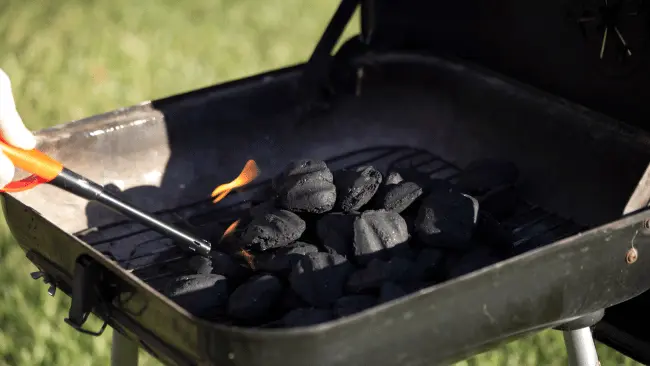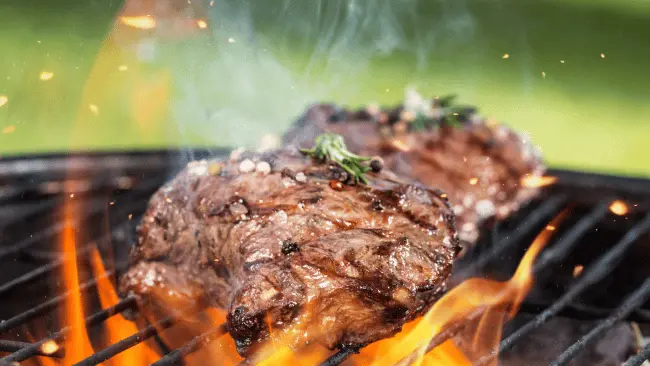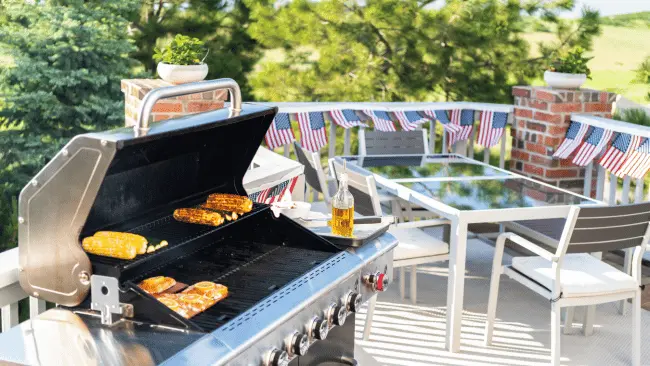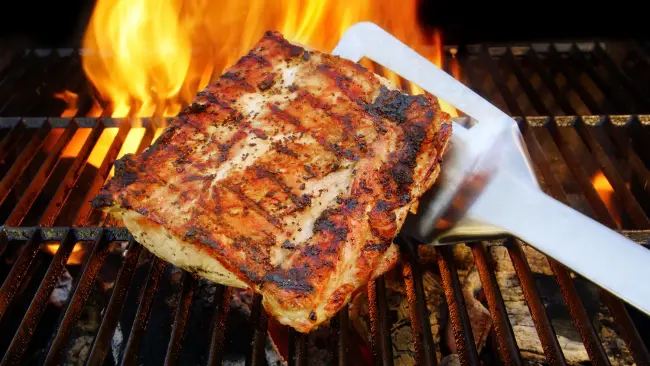Can You Use Charcoal in a Pellet Grill? The Ultimate Guide to Grilling Versatility

Picture this: It’s a perfect summer evening, and you’re ready to fire up your trusty pellet grill for a backyard barbecue. But as you reach for the pellets, a thought crosses your mind – “Can you use charcoal in a pellet grill?” It’s a question that’s sparked debates among grill enthusiasts and left many scratching their heads. Whether you’re a seasoned pitmaster or a weekend warrior, the allure of combining the convenience of a pellet grill with the classic flavor of charcoal is undeniably tempting.
In this comprehensive guide, we’ll dive deep into the world of pellet grills and charcoal, exploring the possibilities, risks, and creative workarounds that could potentially give you the best of both worlds. So, grab your favorite grilling beverage, and let’s unravel this smoky mystery together!
Understanding Pellet Grills: The Basics
Before we tackle our burning question, let’s get a quick refresher on pellet grills:

Pellet grills are outdoor cookers that combine elements of gas grills, charcoal smokers, and kitchen ovens. They use wood pellets as fuel, which are fed into a burn pot by an auger system. An electric controller maintains the temperature by regulating pellet flow and fan speed. This setup allows for precise temperature control and consistent cooking.
Key features of pellet grills
- Automated temperature control
- Versatility (smoking, grilling, baking)
- Consistent results
- Variety of flavor options through different wood pellets
Now that we’ve got the basics down, let’s address the elephant in the room – or should we say, the charcoal in the hopper?
The Short Answer: Can You Use Charcoal in a Pellet Grill?
Let’s cut to the chase – the straightforward answer to “Can you use charcoal in a pellet grill?” is no, you shouldn’t use charcoal directly in a standard pellet grill. Pellet grills are designed specifically for wood pellets, and using charcoal can cause several issues:
- Damage to the auger system
- Interference with temperature sensors
- Potential fire hazards
- Voiding of warranty
But don’t close this article just yet! While you can’t simply swap out pellets for charcoal, there are some creative ways to get that charcoal flavor you’re craving. Let’s explore why it’s not recommended and then look at some alternatives.
Why Pellet Grills and Charcoal Don’t Mix (Usually)
To understand why tossing charcoal into your pellet grill is a no-go, let’s break down the potential problems:
Auger Damage
The auger in a pellet grill is designed to transport small, uniform wood pellets. Charcoal pieces are larger and irregularly shaped, which can jam or damage the auger mechanism.
Temperature Control Issues
Pellet grills rely on precise temperature control systems. Charcoal burns differently than wood pellets, which can confuse the grill’s sensors and lead to inconsistent cooking temperatures.
Fire Risks
Charcoal can produce higher temperatures than pellet grills are designed to handle, potentially leading to dangerous situations or damage to your grill.
Warranty Concerns
Using charcoal in a pellet grill typically voids the manufacturer’s warranty, leaving you on the hook for any repairs or replacements.
The Charcoal Flavor Craving: Why We Want It
Now that we’ve covered why you shouldn’t use charcoal directly in your pellet grill, let’s talk about why you might want to in the first place:
The Unique Charcoal Taste
Charcoal imparts a distinct flavor that many BBQ enthusiasts swear by. It’s that smoky, slightly bitter taste that screams “authentic barbecue” to many.
High Heat Searing
Charcoal grills can reach higher temperatures than most pellet grills, making them ideal for getting that perfect sear on steaks.
Tradition and Nostalgia
For some, the ritual of lighting charcoal and managing the fire is part of the grilling experience they miss with pellet grills.
Creative Solutions: Getting Charcoal Flavor in Your Pellet Grill
Just because you can’t use charcoal directly doesn’t mean you can’t achieve that coveted flavor. Here are some clever workarounds:
Charcoal Pellets
Some brands offer wood pellets infused with charcoal. These provide a hint of charcoal flavor while still being safe for your pellet grill.
Smoke Tubes
Use a smoke tube filled with a mix of wood pellets and activated charcoal pellets (not briquettes) to add smoky flavor.
Grill Grates
Invest in cast iron grill grates. They retain heat better and can help achieve a better sear, mimicking some aspects of charcoal grilling.
Liquid Smoke
While purists might scoff, a few drops of liquid smoke in your marinade can add a charcoal-like flavor to your meats.
The Hybrid Approach: Dual Grill Setup
If you’re really committed to getting both pellet convenience and charcoal flavor, consider a dual grill setup:
Use your pellet grill for
- Low and slow cooking
- Smoking larger cuts of meat
- Maintaining consistent temperatures for long cooks
Have a small charcoal grill on hand for
- High-heat searing
- Cooking smaller items that benefit from charcoal flavor
- Satisfying your charcoal grilling cravings
This approach gives you the best of both worlds without compromising the integrity of your pellet grill.
Enhancing Flavor in Your Pellet Grill (Without Charcoal)
If you’re looking to boost flavor in your pellet grill cooking, try these tips:
Experiment with Wood Pellets:
Different wood types impart various flavors. Mix and match to find your perfect blend.
Use a Cast Iron Skillet:
For searing, heat a cast iron skillet on your pellet grill. It can reach higher temperatures than the grill grates alone.
Try the Reverse Sear:
Smoke your meat at a low temperature, then finish with a high-heat sear for the best of both worlds.
Marinades and Rubs:
Enhance flavors with carefully chosen marinades and rubs that complement the wood pellet smoke.
Pellet Grill Myths and Facts
Let’s clear up some common misconceptions:
Myth: Pellet grills can’t produce a good bark.
Fact: With the right techniques, pellet grills can create excellent bark on briskets and pork butts.
Myth: You can’t get smoky flavor from a pellet grill.
Fact: While it’s different from charcoal, pellet grills can produce a delicious smoky flavor.
Myth: Pellet grills are just glorified ovens.
Fact: Pellet grills offer unique flavors and cooking methods that set them apart from regular ovens.
The Future of Grilling: Innovations on the Horizon
The grilling world is constantly evolving. Here are some trends to watch:
Hybrid Grills:
Some manufacturers are developing grills that can use both pellets and charcoal, offering true versatility.
Smart Grilling:
Wi-Fi-enabled pellet grills allow for remote monitoring and control, blending traditional BBQ with modern technology.
Sustainable Pellets:
Look for more eco-friendly pellet options made from sustainable sources or even food waste.
Making the Most of Your Pellet Grill
Embrace what your pellet grill does best:
Consistency:
Appreciate the set-it-and-forget-it nature for long cooks.
Versatility:
Experiment with different cooking styles – from smoking to baking.
Flavor Exploration:
Try various wood pellet flavors to expand your taste horizons.
Conclusion: Embracing the Best of Both Worlds
While you can’t directly use charcoal in a standard pellet grill, the world of outdoor cooking is full of possibilities. By understanding the strengths of your pellet grill and getting creative with flavor enhancement techniques, you can achieve amazing results that might just rival traditional charcoal cooking.
Remember, great barbecue is as much about the journey as it is about the destination. Whether you’re smoking a brisket on your pellet grill or searing a steak on charcoal, the joy of outdoor cooking lies in experimentation, learning, and sharing delicious meals with friends and family.
So, fire up that pellet grill, try out some of the tips we’ve discussed, and who knows? You might just create your own signature style that combines the best of both pellet and charcoal worlds. Happy grilling!





